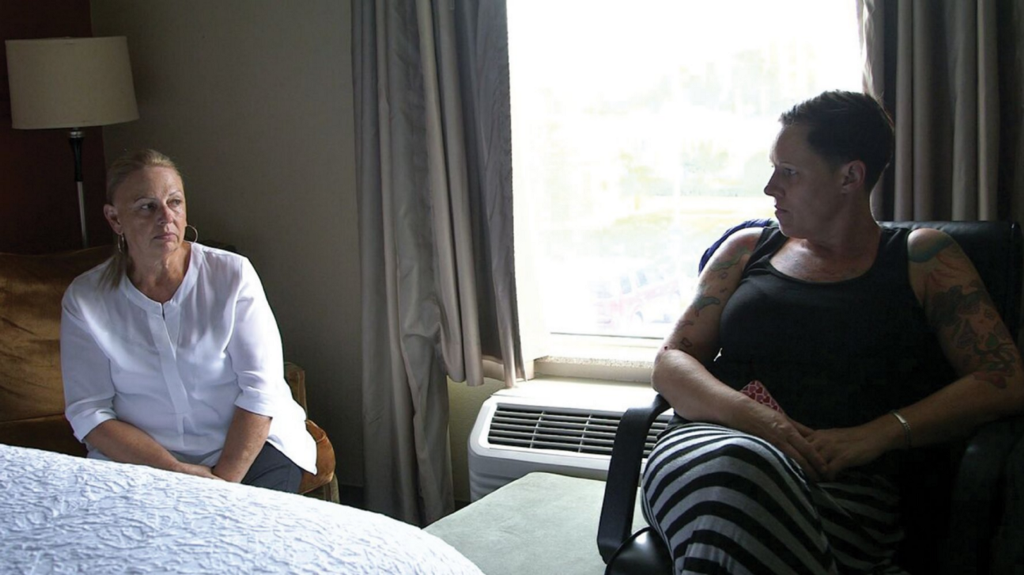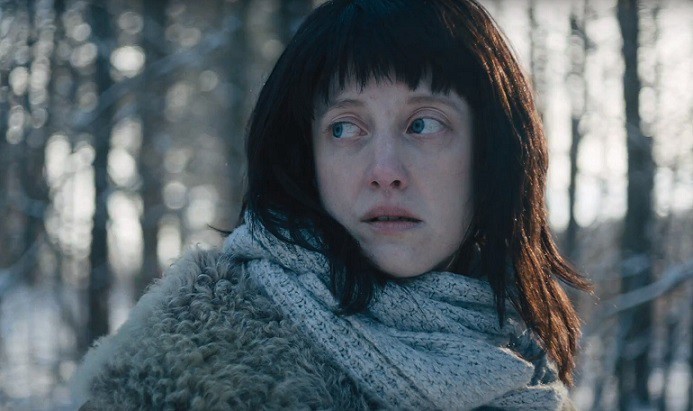Katie Green and Carlye Rubin made their directorial debut with “The (Dead Mothers) Club,” which broadcast on HBO in 2014. The documentary centers on three women who lost their mothers during young adulthood. Green and Rubin later formed the production company Smoke & Apple Films together. Next up, they are directing “No Place For Children,” a doc about the loopholes in the Felony Murder rule as applied to juveniles.
“The Family I Had” will premiere at the 2017 Tribeca Film Festival on April 21.
W&H: Describe the film for us in your own words.
KG&CR: In “The Family I Had,” a mother’s love and ability to forgive is profoundly tested when her teenage son kills her daughter. She’s left redefining her place in the world as she retraces her family’s past and navigates an uncertain future.
W&H: What drew you to this story?
KG&CR: Initially, we were documenting this story within a wider conversation about the impact extreme sentencing of youth has on families. The more we learned about this family, it became increasingly clear we were making a very different film that offered a unique opportunity to dive deeper. Thematically, we’re very drawn to stories surrounding loss. There was an organic shift from our last film, which explored early maternal loss, to exploring it from the other side, with a mother having lost her children.
W&H: What do you want people to think about when they are leaving the theater?
KG&CR: This is a complicated story with complex characters, and we want to put the audience in an uncomfortable place. We hope to challenge people’s preconceived notions of guilt and accountability in the same way making this film has challenged ours, and come away with a more nuanced understanding of unconditional love and forgiveness.
W&H: What was the biggest challenge in making the film?
KG&CR: Barring the obvious hurdle of funding, transitioning from our original film idea to a portrait of a family was a huge challenge. It was a real struggle pitching to Points North Forum, as we were internally having discussions about making a different film than the one we were there to pitch.
It was actually at our Points North follow-up meetings that we tested the waters for this film — it was clear we made the right decision. Our challenge then shifted to telling this story responsibly in a way that was both fair to our subjects and to audiences.
W&H: How did you get your film funded? Share some insights into how you got the film made.
KG&CR: Funding has been — and continues to be — a real uphill battle. Shifting gears so late into production put us at a real disadvantage in applying for grants. While we still are seeking to raise the majority of our budget, the Dogwoof/TDog Productions grant was instrumental in our completing the film in time for Tribeca.
W&H: What does it mean for you to have your film play at Tribeca?
KG&CR: It’s hard to articulate what it means to play at a festival as illustrious as Tribeca. It feels full circle having participated in TFI Network at last year’s festival, where we met Anna Godas, CEO of Dogwoof, and the Motto Pictures team. Having attended the festival for years as audience members, it’s surreal and exciting to be showing our own work.
W&H: What’s the best and worst advice you’ve received?
KG&CR: Best advice: Just start filming!
Worst advice: We’ve learned to let bad advice go in one ear and out the other.
W&H: What advice do you have for other female directors?
KG&CR: Be kind to yourself. Share your work. Ask for help. Help/hire other women — it will come back to you tenfold.
W&H: Name your favorite woman-directed film and why.
KG&CR: We initially bonded over a shared love for Ondi Timoner’s “We Live in Public.” It felt bold, inventive, and big in a way that we envied.
After separately hearing Heidi Ewing and Rachel Grady [directors of “Norman Lear: Just Another Version of You”] on “Pure Nonfiction” we both were like, “You have to listen to this.” We saw a lot of parallels. Those are obviously massive shoes to fill, but we really got a sense of their mutual respect for one another and how they let humor guide them in the same way that we do. We always loved their films, but after hearing them on that podcast, we became fans of them as a kick-ass female filmmaking team.
W&H: There have been significant conversations over the last couple of years about increasing the amount of opportunities for women directors yet the numbers have not increased. Are you optimistic about the possibilities for change? Share any thoughts you might have on this topic.
KG&CR: While it’s encouraging a space has been carved out for female directors, we need to own that space. If we choose to believe that we’re less than or that we don’t deserve to earn as much as men, then we’re fueling the fire.
Documentary filmmaking requires you to be somewhat nomadic; it’s not secure or well-paid, nor is it glamorous or easy. These are not often things women are told they’re allowed to be or do, so we think change has to come from instilling these ideas in girls from a young age.







